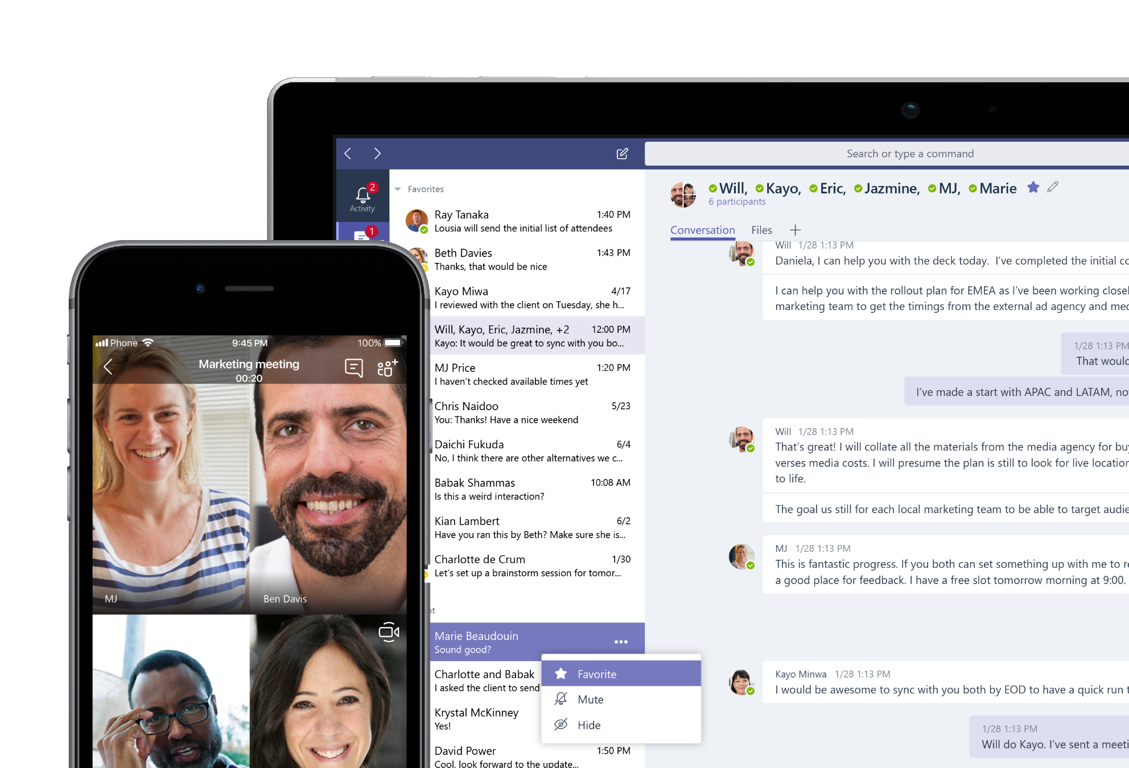Digital communication has become an integral part of the modern workplace. We increasingly rely on digital communication tools for both internal and external collaboration, even when the other party is working at the desk next to us. And while they make our work much easier, there are ways to make sure you get even more value out of digital communication tools in the workplace.
Provide your employees with a unified communication platform
These days there are so many options when it comes to choosing a communication channel. One can easily get lost among the variety of tools that are available.
While it’s great that we have so many ways of communicating with our colleagues, partners, customers, and other players, having to switch among multiple apps can be distractive and inefficient. Sticking to just 2-3 communication channels and learning the most effective ways to use each of them will help improve digital communication in the workplace.
Emails will never go away from our lives. But using them internally may not be the best way to communicate with colleagues. It might also be tempting to create a WhatsApp group to talk to our team members. However, when it comes to sharing and co-editing documents, it’s definitely not the way to go. So, switching to another platform again, then?
Having a communication platform that unites multiple communication channels and provides users with all the tools for effective teamwork is the first step to improving communication in the workplace. And this is what Microsoft Teams all about.
Calls, meetings, private and group chats, posts, integrations with other apps file storage, co-authoring – and all that while working with both internal and external users. When it comes to digital collaboration, there are few things you can’t do with Teams.

Discover 10 reasons why Microsoft Teams is right for your business.
Provide training
If you want your employees to get the most of your digital communication tools, providing training is the way to ensure that. Some tools might not be that easy to adopt and their interface is not always intuitive.
From our own experience working with customers around Microsoft Teams, most companies use the tool only for messaging and meetings. It´s a shame, given all the many capabilities of the platform that can help organization empower employees and therefore drive better business results.
During the training, you can demonstrate how your employees can use the digital tool for their communication and collaboration.
Training doesn´t end with educational videos. Explaining all the necessary features while incorporating use cases specific for each team and department within your organization will bring much more value and better results.

Learn more about how to build an effective Microsoft Teams training plan.
Be specific about communication rules
Some communication channels, such as emails, are best for contacting, for example, leads and prospects. When it comes to communicating with colleagues, private chats may be preferrable for quick clarifications and informal discussions. Channel posts are more advisable if you want to share important information or an update with the entire team. Lengthy discussions are better conducted in a form of a video meeting – this way, you can record the entire conversation and refer to transcripts when needed.
These are some of the best practices that can help you improve communication in the workplace. It’s worth sharing them with the entire staff to encourage consistency and keep everyone on the same page.
You can create written rules and share them through different communication channels. This way, they are visible easily accessible to your audience.
If your organization is using Microsoft Teams, you can add these guidelines in the Wiki tab or pin your written document as a tab in a dedicated channel.

You can refer to these articles for more best practices:
- Microsoft Teams Best Practices for Being a Great Team Player
- Group Chat vs. Channel Conversation in Microsoft Teams
- Best Practices for Microsoft Teams Channels
- All You Need to Know about Chat in Microsoft Teams
- Microsoft Teams Meetings: How to Make the Most of Them
Configure notifications
One of the benefits of working remotely is being free from distractions that often happen in the office. And even if we do go to the office every now and then – we increasingly rely on digital tools for communication with our colleagues.

However, it doesn’t always mean that we have fewer interruptions. It is especially true for large organizations – you can get flooded with ongoing notifications, making it hard to focus and stay productive.
To make sure your employees stay engaged and productive and to prevent them from burning out, make sure you set up the right notification policies in the digital tool your organization uses.
In Microsoft Teams, you can set up channel moderation, disable team/channel mentions, encourage employees to set up focus time, quiet days and hours and mute chats.
Learn more about how to manage Microsoft Teams in large organizations.
Have productive meetings
Let’s face it: not all the meetings are necessary. They ARE important, for sure. But for most of us the truth is, we can easily do without at least some of them.
Research suggests that most employees attend 62 meetings per month, where half of the meetings are a complete waste of time (!).
The numbers are quite shocking – just think about how much work could be done instead. If you think about it, an unproductive one-hour meeting for 10 people equals to 10 hours of missed work.
To improve digital communication in your workplace it is essential that you keep your meeting rhythm as structured as possible. The best practice is to have recurring meetings with a clear agenda that is shared in advance. This way, everyone is prepared to share their news, reports, and ideas and you avoid ad-hoc meetings.
It may also be a good idea to dedicate only specific days of the week to meetings. That can be, for example, Monday and Friday. In this way, your team will have three entire days of uninterrupted work that will positively impact their productivity.
You may also want to reconsider meeting attendance, to make sure that only those involved in the discussion participate in the conversation. You can always record a meeting and share the recording and meeting notes with others.

Give and receive feedback
One of the best ways to improve communication in the workplace is by making sure everyone feels free to express their opinion. Your employees should feel comfortable sharing feedback, suggesting ideas for improvement of certain process and raising concerns when they arise.
If you have a culturally diverse team, and/or your team members are dispersed across the world, you might experience lack of communication and understanding within your team. This is why it’s so important to empower your employees and have their voices heard.
To do so, you can create specific channels where everyone in your team can give their ideas and suggestions and celebrate individual and team accomplishments.
You may also want to have monthly or quarterly 1:1 meeting with your team members, asking them to share feedback regarding their work, performance, and teamwork.
You can also use apps to collect your team’s feedback, such as Microsoft Forms that can be added as a tab in Microsoft Teams.

Set up governance policies
If you wish to improve digital communication in the workplace, you need to make sure you establish governance policies for the tool you’re using. You should decide who can create teams and channels, and whether your employees can invite external users and what permissions they will have.
You may want to set up naming policies for your teams. In this way, you keep your workspace organized, easily keep track of conversations, and avoid confusion.

Your employees should also know about restrictions regarding apps they use, information sharing and downloading, compliance rules, and other.
If you wish to learn more about security and governance, head over to these articles:
